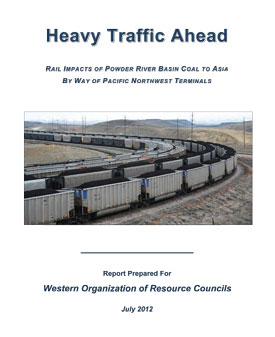Heavy Traffic Ahead, for the first time, identifies costs, many of which will fall on taxpayers, for infrastructure due to increased rail traffic.
The report shows that coal transport could exceed 75 million tons per year by 2017 and 170 million tons per year by 2022 to the proposed terminals in the Pacific Northwest. For comparison, Transportation experts also found that increased rail traffic will affect grain producers that need access to rail space. The producers will face increased competition, potentially delaying shipments and increasing costs.
The tremendous increase in rail transport will require additional overpasses, underpasses and other upgrades, costs which taxpayers have typically had to pay.
Additional findings are:
- An increase in coal transport by rail will result in bottlenecks, traffic delays and congestion from trains throughout the entire route. These traffic issues can result in delayed emergency response times in every community along the routes.
- Increased coal rail traffic threatens to divert the lucrative container traffic from ports in Washington to Canadian and California ports.
- The two most impacted major cities will be Spokane, WA (up to 63 trains per day) and Billings, MT (up to 57 trains per day). Nearly every loaded and empty coal train will pass through these two cities.

